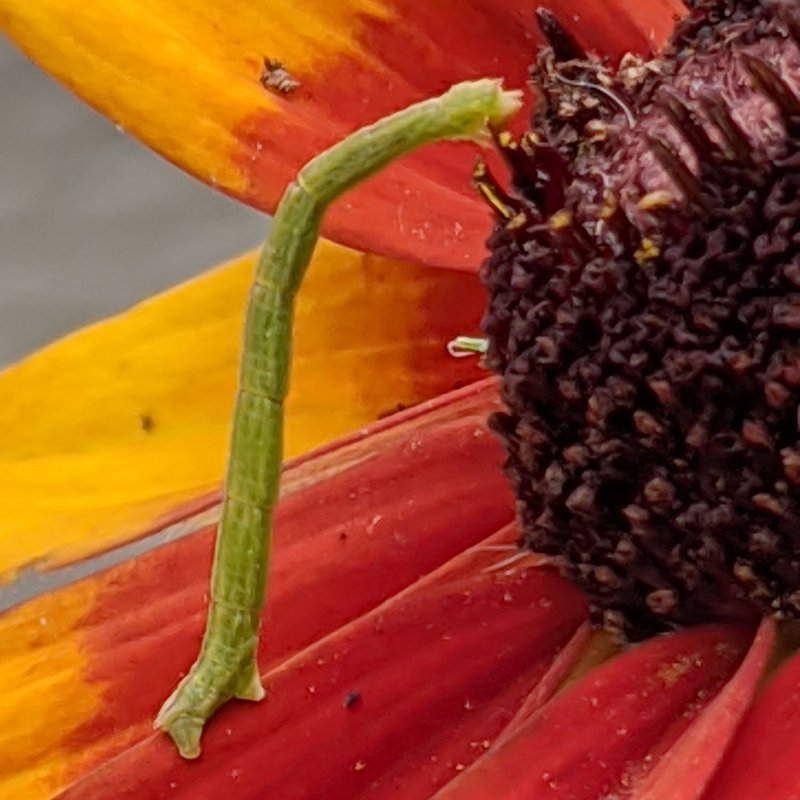
Inchworms, which aren’t actually worms at all but the larvae of geometrid moths, have a lot in common with other living beings when it comes to temperature sensitivity. Just like how you might shiver on a cold day or seek shade when the sun gets too hot, inchworms go through some pretty interesting changes based on the weather. In this article, we’ll unravel how temperature affects their behavior, metabolism, and even their survival. Grab a beverage, and let’s dive into the world of inchworms!
What Are Inchworms?
Before we dig into how temperature affects them, let’s get to know inchworms a bit better. Inchworms, also known as loopers, get their name from the way they move: they contract and then extend their bodies, almost as if they’re measuring the ground inch by inch. They’re usually green, brown, or even a little fuzzy, blending in beautifully with their surroundings.
These little guys are often found munching on leaves, which is their main food source. They play an important role in the ecosystem by helping to control plant growth. Think of them as tiny gardeners, nibbling away to keep nature in balance. Their lifecycle involves several stages, from egg to larva to pupa, before they finally become adult moths. Understanding how temperature affects them can help us appreciate their role in our gardens and ecosystems.
The Importance of Temperature for Inchworms
Temperature plays a crucial role in the lives of inchworms. Here’s the thing: like many insects, they are ectothermic, which means their body temperature is largely determined by their surroundings. When it’s warm, inchworms are generally more active and can digest their food quicker. This means they might nibble on even more leaves when the sun is shining.
However, when temperatures drop, things change. Inchworms become sluggish and may even go into a sort of hibernation state. This change in behavior helps them conserve energy when it’s cold. You might even notice that they’re less visible during colder months. So, if you’re on the lookout for these little guys in winter, good luck!
How Temperature Affects Inchworm Behavior
You might be wondering how exactly temperature shifts impact inchworm behavior. Let’s break it down. When the temperature rises, inchworms are quick to take advantage of the warmth. They tend to be more active, making them easier to spot as they crawl along tree branches and leaves. This is their time to feed and grow!
• Active Feeding: In warmer weather, you’ll find them munching on leaves with gusto. They metabolize food faster, which helps them grow and prepare for their next life cycle.
• Mating and Reproduction: As temperatures rise, inchworms are also more likely to find mates and reproduce. Warmer conditions create a favorable environment for their eggs.
But what happens when the temperature drops? Well, here’s where it gets interesting.
• Slower Movements: As temperatures decrease, inchworms slow down significantly. This is their way of conserving energy.
• Hibernation: In colder months, they often go into a dormant state, hiding under the leaves or in the soil. This keeps them safe from the elements until it warms up again.
Survival Strategies in Extreme Temperatures
Inchworms have developed several clever strategies to survive extreme temperature changes. They’re not just sitting idly by; they’re adapting to their environment! For instance, during particularly hot spells, they might seek shelter under leaves or in shaded areas to escape the intense sun.
Conversely, in the winter, some inchworms can produce a type of natural antifreeze in their bodies. This antifreeze helps them survive freezing temperatures. It’s a remarkable survival tactic!
If you’re ever out exploring in the fall or spring, keep an eye out—many inchworms will be in their prime during those transitional seasons.
Temperature and Metabolism
Metabolism is the process through which living things turn food into energy. For inchworms, temperature has a direct impact on this process. Scientists have found that warmer temperatures generally speed up their metabolism.
When it’s warm outside, inchworms can digest their meals quickly, allowing them to feed more frequently and grow faster. You might think of it like making a delicious soup on a chilly day: the warmth helps everything cook together nicely.
On the flip side, cooler temperatures slow their metabolism down. This can lead to not only slower movements but also reduced appetites. In a sense, the colder it gets, the less motivated they are to munch on those tasty leaves.
Environmental Changes and Their Impact
In recent years, changes in climate and temperature patterns have raised concerns about how they might affect inchworm populations. You might have heard about warmer winters and hotter summers—these conditions can disrupt their natural cycles.
For instance, a warm winter might prompt inchworms to emerge earlier than usual. If they come out too soon, they might not find enough food since many plants aren’t ready to grow yet. This can lead to challenges in their numbers and survival.
Conversely, extreme heat waves can also be detrimental. If it gets too hot, it could affect their feeding and reproduction patterns. It’s a delicate balance they need to maintain, and with climate change, that balance is shifting.
Inchworms might be small, but they showcase resilience in the face of changing temperatures. They’ve adapted some pretty cool tricks to survive shifts in their environment. The next time you spot one inching along, take a moment to think about its journey and how it navigates the ups and downs of the weather.
Whether it’s basking in the warmth of a sunny day or hunkering down during a cold snap, inchworms have a fascinating story. They remind us of the intricate connections within nature, and how every little creature plays its part. So, while you enjoy your next outdoor adventure, look out for these little inching wonders and appreciate their unique relationship with temperature.

